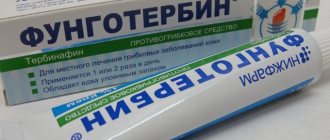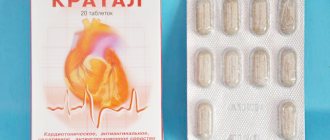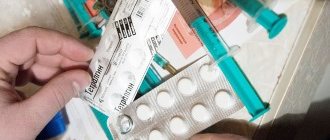Write a review
Reviews: 0
Manufacturers: Polpharma SA Zaklady Farmaceutyczne SA, PL
Active ingredients
- Acetylsalicylic acid
- Glycine
Disease class
- Acute upper respiratory tract infection of multiple and unspecified localization
- Joint pain
- Myalgia
- Headache
- Other constant pain
- Alcohol consumption
- Pain and other conditions associated with the female genital organs and the menstrual cycle
- Tooth pain
Clinical and pharmacological group
- Not indicated. See instructions
Pharmacological action
- Anti-inflammatory
- Antipyretic
- Analgesic (non-narcotic)
- Analgesic (narcotic)
Pharmacological group
- NSAIDs - Salicylic acid derivatives in combinations
The drug is sold in the form of tablets
"Alka-Prim" composition has the following:
- Acetylsalicylic acid – thirty milligrams
- Aminoacetic acid (glycine) - one hundred milligrams.
- Citric acid, sodium bicarbonate.
The tablets are placed in a blister of two pieces. One pack contains five blisters.
Alka-Prim should be stored in a place where there is no light, at a temperature of fifteen to twenty-five degrees Celsius. It is stored for two years, after which it cannot be consumed.
Side effects
On the side of the blood and lymphatic system:
thrombocytopenia, anemia (due to the so-called chronic microbleeding), hemolytic anemia in patients with deficiency of glucose-6-phosphate dehydrogenase, leukopenia, agranulocytosis, eosinopenia, swelling pregnancy risk of development of bleeding, increasing the hour of bleeding, increasing the prothrombin hour, analgesic anemia with typical laboratory manifestations and clinical symptoms, hemolysis.
On the side of the immune system:
hypersensitivity reactions, bronchospasm, urticaria and angioedema, including anaphylaxis, anaphylactic reactions, anaphylactic shock with various laboratory and clinical manifestations.
On the side of the nervous system:
ringing in the ears (cause a symptom of overdose), impaired hearing, confusion, cerebral and internal cranial hemorrhages. If you take too many medications and take acetylsalicylic acid, you may get a headache, which will get worse when you take additional doses.
From the side of the organs:
destruction of the dawn.
On the side of the cardiac system:
heart failure, swelling.
From the side of the judiciary:
arterial hypertension, bleeding, including perioperative hemorrhages, hematomas, intramuscular hemorrhages.
On the side of the respiratory system, the organs of the chest and the mediastinum:
nosebleeds, rhinitis, nasal congestion, bronchospasm in patients sensitive to acetylsalicylic acid and other NSAIDs.
On the side of the scolio-intestinal tract:
dyspeptic disorders, swelling, hypersensitivity in the epigastrium, boredom, vomiting, loss of appetite, abdominal pain, intestinal bleeding, deformation of the mucous membrane, thickening of peptic ulcers, perforation ї, bleeding from the clear, inflammation of the scolial-intestinal tract.
Peptic infections occur in 15% of patients, which can be treated with acetylsalicylic acid.
On the side of the liver and zhivochovidnyh paths:
In patients with juvenile rheumatoid arthritis, systemic worms, rheumatism or a history of liver disease, hepatonecrosis may be caused by hepatic hepatonecrosis, liver disease and hypertrophy. Transient increase in the level of aminotransferase, iron phosphatase and bilirubin in blood plasma.
From the side of the skin and under the skin:
skin visip, kropivyanka, sverbizh, erythema multiforme.
On the side of the thyroid system:
proteinuria, the appearance of leukocytes and erythrocytes in the section, papillary necrosis, interstitial nephritis, bleeding from the organs of the sechostatic system, impaired function of the kidneys, acute kidney deficiency, nephropathy, nephrotoxicity Yes.
In case of sudden overdose: a significant change in creatinine clearance or acute tubular necrosis with impaired liver function.
Zagalni discord:
feverish
The effect of the drug on the body
Acetylsalicylic acid belongs to the group of NSAIDs and has an analgesic, anti-inflammatory and antipyretic effect. It helps to increase the permeability of vascular walls, the susceptibility of pain receptors to the action of acetylcholine and serotonin, and inhibits the synthesis of PEG, which leads to a decrease in body temperature. The substance can reduce pain caused by inflammation or other reasons. The acid inhibits platelet aggregation, reduces the concentration of prostaglandins, which leads to the elimination of inflammation.
Glycine reduces the effect of the main substance on the digestive organs and prevents indigestion. Aminoacetic acid is a neurotransmitter that has antioxidant and antitoxic effects. It improves metabolic processes in neurons, has a sedative effect, reduces the effect of ethyl alcohol and its decomposition products on the body, eliminates stress, and increases the body's resistance to external irritants.
When taking the Alka-Prim tablet, the main active ingredient dissolves in the body in full; when eating, this process may slow down. After half an hour, it begins to actively affect the body, spreading throughout it. The metabolic process occurs in the liver, stomach, joint fluid, and blood plasma. 50% of the active substance is excreted by the kidneys in urine after twenty minutes. The substance is completely eliminated from the body after three days.
Effervescent tablets "Alka-Prim": instructions
One tablet is dissolved in one hundred and fifty grams of clean water and drunk during meals. The dosage is prescribed by the doctor in each specific case.
It is recommended to take the drug four times a day, one or two tablets, it all depends on the degree of manifestation of negative symptoms.
If you have withdrawal symptoms, you need to take two tablets at once. The maximum daily dose should not be more than four grams of acetylsalicylic acid.
Drug interactions
With simultaneous use of Alka-Prima:
- Insulin, oral hypoglycemic agents and anticoagulants, methotrexate, glucocorticosteroids, other NSAIDs, valproic acid - increase their effect;
- Sulfinpyrazone, diflunisal, fenoprofen, ibuprofen, indomethacin, piroxicam, naproxen, sulindac, drugs blocking tubular secretion - weaken their therapeutic effect;
- Myelotoxic drugs - increase the hematotoxicity of effervescent tablets.
Restrictions on use and contraindications
According to the instructions, Alka-Prim should not be used in a number of cases:
- High susceptibility to the components of the product, as well as to drugs of the NSAID group;
- Exacerbation of stomach and duodenal ulcers;
- Development of various types of bleeding in the past;
- Adenoids and asthma;
- Pathologies of vital organs;
- Thrombocytopenia;
- von Willebrand syndrome;
- Hemophilia;
- Children under twelve years of age;
- Pregnancy in the last trimester;
- Breastfeeding period;
- Lack of vitamin K in the body;
- Before performing surgical interventions.
You should take the drug with caution when there is excessive bleeding during menstruation in women, hypertension, hyperuricemia, heart failure, as well as chronic alcoholism.
In the third trimester of pregnancy, you should not take the drug to avoid complications during childbirth. In other cases, medical supervision is necessary; it is important to take the minimum dosage of the drug for a short period of time.
During breastfeeding, it is allowed to take the drug, but at this time the child is transferred to artificial feeding. You can continue breastfeeding no earlier than four days after completing drug therapy.
It is necessary to use Alka-Prim with caution with Heparin, anticoagulants, thrombolytics and antidiabetic agents, since the drug will increase their effect. Therefore, it is recommended to monitor the concentration of glucose in the blood during this period.
Alka-Prim also enhances the effect of other drugs from the same group of drugs, glucocorticosteroids, barbiturates, Digoxin. It reduces the effectiveness of Phenylbutazone and Spironolactone. When taken together with anhydrase inhibitors, negative reactions may develop.
Do not take the drug with alcoholic beverages, as the risk of gastric bleeding increases.
Interactions with other medicinal drugs and other types of interactions
Contraindicated combinations
Methotrexate:
Suspension of methotrexate in doses of 15 mg/day increases the hematological toxicity of methotrexate (reduced nitric clearance of methotrexate by anti-inflammatory agents and the presence of salicylates in methotrexate due to its binding to proteases). їnami plasma). Acetylsalicylic acid enhances the toxic effect of methotrexate on the cerebrospinal fluid. Simultaneous administration of acetylsalicylic acid with methotrexate in doses of 15 mg per day or more is contraindicated.
Hypoglycemic drugs:
Acetylsalicylic acid enhances the effect of hypoglycemic drugs. When high doses of acetylsalicylic acid are ingested for one hour with antidiabetic drugs from the group of similar sulfonyl compounds or insulin, the hypoglycemic effect of the remaining hypoglycemic effect increases the effect of acetylsalicylic acid and volatile sulfonyl compounds associated with plasma proteins. This drug should not interfere with similar sulfonyl compounds or other hypoglycemic drugs.
Medicines that increase the excretion of sechoic acid (for example, probenecid, sulfinpirazone):
Salicylates reduce the effect of drugs, which increases the excretion of sechoic acid. The drug is not immediately compatible with antigout drugs.
Anticoagulant:
with one-hour stagnation, the risk of bleeding develops.
Alcohol:
alcohol increases the frequency and intensity of bleeding in the intestinal tract caused by acetylsalicylic acid. During the holiday, you should not drink alcohol.
Combinations that need to be combined with care.
Angiotensin converting enzyme (ACE) inhibitor:
Acetylsalicylic acid may reduce the antihypertensive effect of angiotensin-converting enzyme inhibitors.
Acetazolamide:
acetylsalicylic acid can significantly increase the concentration and thereby the toxicity of acetazolamide.
Antiepileptic drugs:
acetylsalicylic acid promotes the toxicity of valproic acid, which in turn enhances the antiaggregation effect of acetylsalicylic acid. When stagnated with valproic acid for one hour, acetylsalicylic acid binds with plasma proteins, increasing the toxicity of the remaining substance.
Diuretics:
Acetylsalicylic acid may alter the effectiveness of these drugs and enhance the ototoxicity of furosemide.
Non-steroidal anti-inflammatory drugs:
Immediate administration of acetylsalicylic acid and non-steroidal anti-inflammatory drugs is not recommended, as the risk of side effects from the colonic-intestinal tract increases.
Systemic stasis of glucocorticosteroids
: due to hydrocortisone, which is used in replacement therapy for Addison's disease, its use in combination with acetylsalicylic acid has a greater risk of developing viral disease and sclerosis. which causes bleeding, and also reduces the concentration of salicylates in plasma during the treatment, and after completion of the treatment, the risk of overdose increases salicylates
Corticosteroids:
immediate stagnation promotes the development of scolial-intestinal bleeding.
Corticosteroids reduce the level of salicylates in the blood and increase the risk of overdose after treatment is completed. Digoxin:
Acetylsalicylic acid may act as a potent drug for digoxin.
Thrombolytic drugs:
Acetylsalicylic acid may have the thrombolytic effect of drugs such as streptokinase and alteplase.
Ibuprofen:
Immediately, the stagnation leads to the non-negotiable suppression of platelets by acetylsalicylic acid. Treatment with ibuprofen in patients who are at risk of cardiovascular disease can be accompanied by the cardioprotective effect of acetylsalicylic acid.
Uricosuric properties:
One-time treatment with benzobromarone and probenecid reduces the effect of sechoic acid excretion (through competition of sechoic acid excretion by nircic channels).
Selective inhibitors of serotonin uptake:
There is an increasing risk of bleeding from the upper branches of the scolio-intestinal tract due to the possibility of a synergistic effect.
Omeprazole and ascorbic acid should not be mixed with acetylsalicylic acid. Aminooctic acid reduces the toxicity of anti-dominant drugs, antipsychotic drugs (neuroleptics), anxiolytics, antidepressants. When taken with narcotics, tranquilizers and antipsychotic drugs, the effect of galvanization of the central nervous system is enhanced.
Negative reactions from the body
A number of adverse reactions may occur:
- Abdominal pain;
- Nausea accompanied by vomiting;
- Diarrhea and bloating;
- Decreased concentration;
- Nervousness;
- Itching;
- Anorexia;
- Increased liver size;
- Liver failure;
- Inflammation of the gastrointestinal tract;
- Gastric and intestinal bleeding;
- Hematomas;
- Visual and hearing impairment;
- Nephropathy;
- Bleeding from the genitourinary system, nose and gums;
- Hemorrhages that lead to anemia;
- Hypoperfusion and hemolysis;
- Failure of the heart, breathing;
- Development of allergies;
- Pulmonary edema when taking large doses.
Overdose
In case of overdose, the following symptoms develop:
- Shortness of breath, vomiting;
- Hearing and vision impairment;
- Increased body temperature;
- Convulsions;
- Disorder of water-salt balance and pH level.
If the doses specified in the instructions are significantly exceeded, death may occur. An antidote has not been developed; treatment is symptomatic. The doctor will tell you what to do; there is no need to delay calling him.
To do this, gastric lavage is performed and sorbent is used. In severe cases, resuscitation measures are carried out, the victim must be taken to the clinic.
An overdose is usually observed when using the drug as a result of intoxication of the body due to its prolonged use. Sometimes poisoning can be asymptomatic.
Overdose
After an overdose of acetylsalicylic acid, you may experience: tiredness, vomiting, rapid breathing, vomiting noise.
Other symptoms were also monitored, such as: loss of hearing, blurred vision, headache, restlessness, drowsiness and coma, seizures, hyperthermia. In case of severe intoxication, there is a disturbance in the acid-water balance and water-electrolyte balance (metabolic acidosis and dehydration).
Symptoms of mild and middle stage toxicity appear when stagnant acetylsalicylic acid is administered at a dose of 150–300 mg/kg body weight. Severe withdrawal symptoms occur after taking a dose of 300–500 mg/kg body weight. A potentially lethal dose of acetylsalicylic acid is more than 500 mg/kg body weight.
Death as a result of acetylsalicylic acid was observed after adults took a single dose of 10–30 g.
Overdose of salicylates is possible through chronic intoxication, which results from treatment (infusion over 100 mg/kg/dose for more than 2 days can cause toxic effects), as well as through acute intoxication I, as it poses a threat to life (overdose) and for reasons that may be, for example , vipadkova stagnation with children or non-peredbachenya overdose.
Chronic toxicity with salicylates may cause symptoms, although the signs are nonspecific. Chronic intoxication caused by salicylates is mild, and salicilism develops, as a rule, only after repeated doses of large doses.
Symptoms
Loss of nervousness, confusion, ringing in the ears, deafness, increased sweating, nausea and vomiting, headache, confusion. Ear ringing can be detected at blood plasma concentrations of salicylates above 150–300 mcg/ml. Serious adverse reactions are more pronounced at plasma concentrations of salicylates above 300 mcg/ml.
Acute intoxication is indicated by a change in the acid-salt balance, which may vary depending on the age and severity of intoxication. The most common symptom in children is metabolic acidosis. The severity of the disease cannot be assessed without measuring the concentration of salicylates in blood plasma.
Likuvannya
The patient must be hospitalized. Specific antidote for daily life.
Unusual visits:
- viklikannya vomit or wash the shlunka (with the method of changing the soaking). Such visits are effective for 3-4 years after taking acetylsalicylic acid, and if you take a high dose - up to 10 years.
- Administer actives to vugilla in the form of an aqueous suspension (50–100 g for adults or 30–60 g for children).
- Decrease in body temperature (in case of hyperthermia) by maintaining a low temperature of the external core and stagnation of cold compresses.
- Continuous control of water-electrolyte balance and reduced impairment.
- By accelerating the elimination of acetylsalicylic acid with nitric acid and in treating acidosis, sodium bicarbonate should be administered internally.
- In patients with normal pH function, a gentle diuresis can be carried out to a pH value of 7.5–8. In severe cases, hemodialysis or peritoneal dialysis may be considered. Through dialysis, you can effectively remove acetylsalicylic acid from the body and more likely disrupt the acid-water balance and water-electrolyte balance.
- When the prothrombin hour increases, vitamin K should be administered.
- Do not immediately use drugs that cause a galmic effect on the central nervous system, for example, barbiturates, due to the risk of suppression of the respiratory center.
- Patients with impaired respiratory functions should be treated with sourness. If necessary, perform intubation and mechanical ventilation of the legs.
- Once symptoms of shock appear, standard anti-shock treatment is required.
- Symptomatic rejoicing.
Reviews
Alka-Prim has mostly good reviews, although according to the instructions it has many restrictions on use. It is often used not only to treat hangovers, but also to reduce body temperature and eliminate fever. At the same time, for some, it helps to eliminate the symptoms of a hangover, the headache stops, and weakness and fatigue go away.
Other consumers prefer to use other drugs with fewer side effects. But this product also has its fans, so it is in demand.







